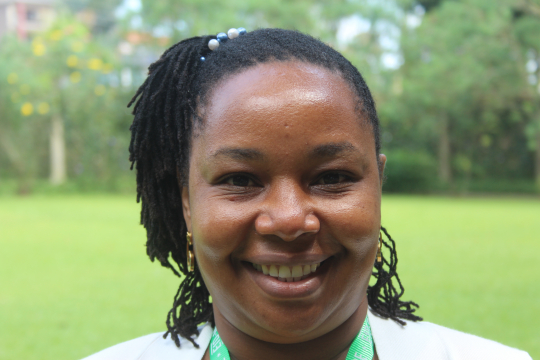“Developing capacity on Inclusive Green Economy is crucial to ensure that our resources can be used by future generations too.” Ann Mwangi, one of the participants in the Inclusive Green Economy (IGE) program, made this remark after the concluding session.
The first group of IGE fellows, that is, participants in the Inclusive Green Economy in practice program, had their concluding session on March 11th, after one busy year of meetings, training sessions, knowledge sharing, and individual projects.
An eye-opener
Ann Mwangi, who is the Chief Economist at Kenya’s State Department for Planning feels that it has been a very valuable and important program.
“This program was really an eye-opener in many ways,” she says.
Must prioritize
Ann Mwangi’s work includes policy formulation, developing long-term plans for the country, such as the Kenya Vision 2030, as well as plans with a shorter time span. She must make sure that every budget is aligned with the country’s overall plans and priorities. The department for planning gives guidelines to each department and sector on what is expected from them.
“Prioritizing is always an issue. Every sector has a wish-list on what they want to achieve, but we have to prioritize what has the best and highest impact to realizing our development goals”.
The “how-bit” is hard
Kenya is currently implementing the “The Big Four Agenda” which means that the government is focusing on universal health care, food security and nutrition, manufacturing, and affordable housing. The “The Big Four Agenda ” is incorporated in the Third Medium Term Plan. Environmental sustainability issues are mostly handled by the Ministry of Environment and are not prioritized in the overall agenda.
So what are the biggest obstacles to achieving an inclusive green economy?
“It’s the lack of understanding of what IGE is and that we all have a role to play. Most people believe that it is something specific for the Ministry of Environment to handle, not something that permeates every issue. Then there is the financing issue: You have to compete with many other very urgent needs. And maybe most of all the “how-bit”, the lack of knowledge of what policy instruments to use. Strengthening the capacity on IGE should be given priority.
Hope more can attend the program
What are the most important things that you learned in the program?
“It’s very important that IGE is integrated early in the planning process. Whatever policies we develop, we need to ask ourselves how they impact IGE. Our project was about the integration of IGE in the planning processes.”
“This was the most practical program I have ever attended. We need more capacity on IGE so I hope a lot more people will be given the opportunity to attend this program.”
By: Petra Hansson
Facts, IGE in practice
Environment for Development (EfD) and the Gothenburg Centre for Sustainable Development (GMV) at the University of Gothenburg, collaborate in an extensive program for capacity development in five countries. This program aims at strengthening government ministries and agencies in East Africa to transform towards an inclusive green economy (IGE).
The program consists of five work packages:
* Trainings-of-trainers, that is getting tools for training colleagues
* Cross-country peer-learning on IGE policies
* Inclusive green economy in practice – individual projects
* Inclusion: understanding and promoting social acceptance for IGE reforms
* Program management, digital learning, and communication
Facts, Kenya Vision 2030 and medium-term plans
Kenya Vision 2030 is the long-term development blueprint for the country. The aim is to create, “a globally competitive and prosperous country with a high quality of life by 2030.” It aims to “transform Kenya into a newly-industrializing, middle-income country providing a high quality of life to all its citizens in a clean and secure environment.”
The Kenya Vision 2030 is implemented through a series of successive five-year Medium-Term Plans (MTPs). The First Medium Term Plan was covered the period 2008-2012. The Second Medium Term Plan 2013-2017 and the Third Medium Term Plan 2018-2022 is driven by the Big Four Agenda.
The Fourth Medium Term Plan will implement the second-last phase of Kenya Vision 2030 over the period 2023 to 2027 under the theme “Accelerating socio-economic transformation to a more competitive, inclusive, and resilient economy.”
